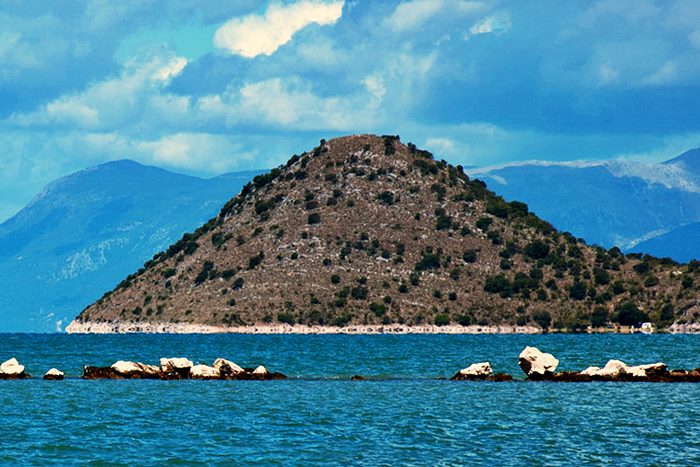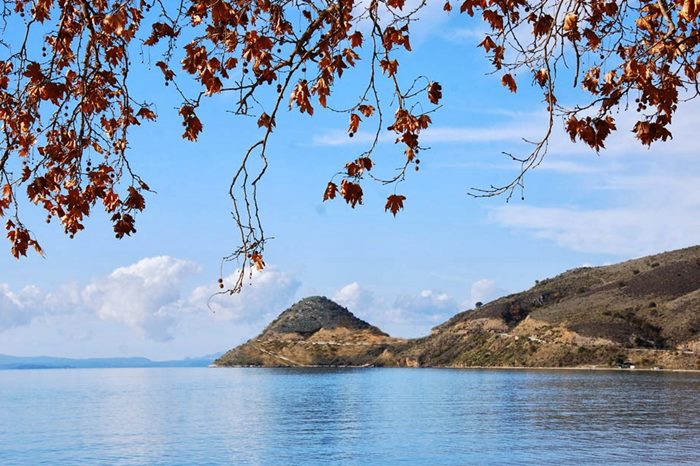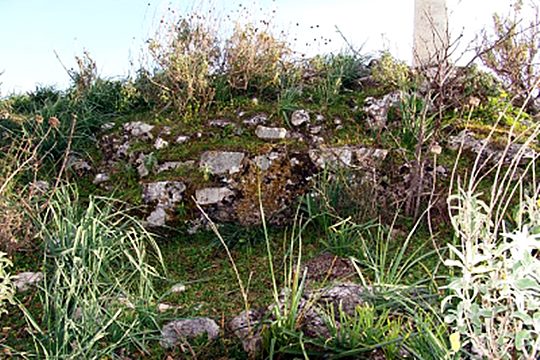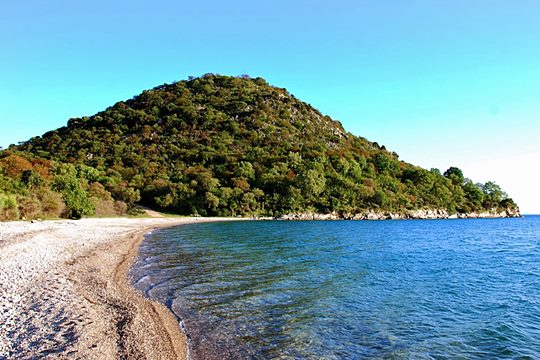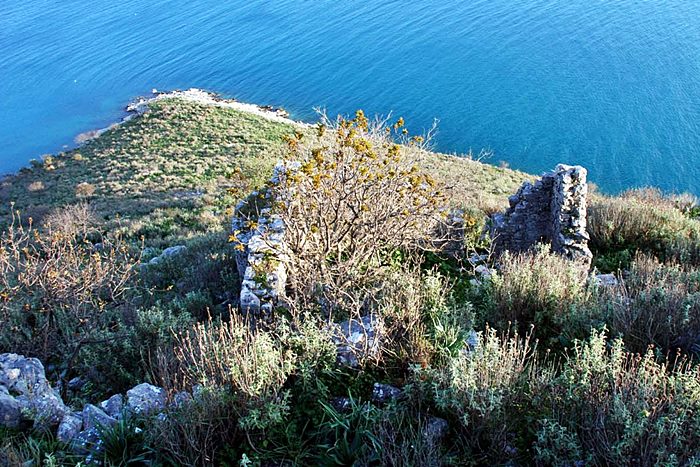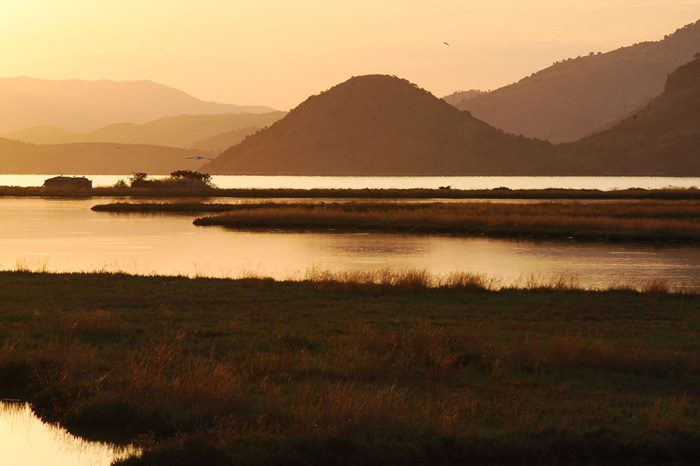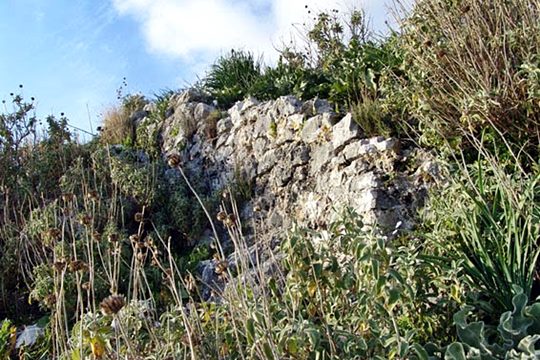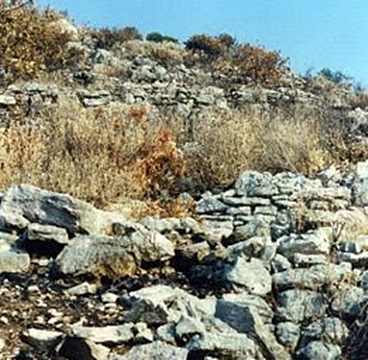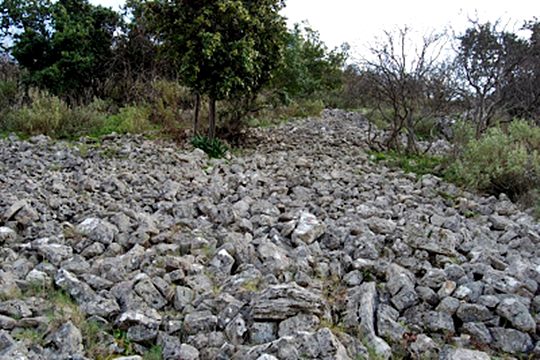Sagiada, Filiates, Thesprotia,Epirus
Fortress of Strovili
| Location: |
| On a conical hill over the sea NW of Sagiada bay in Epirus |
| Region > Prefecture: | 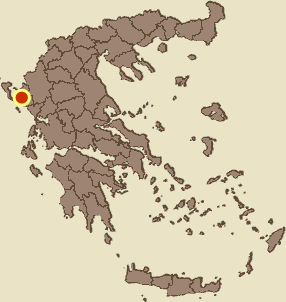 |
| Epirus Thesprotia | |
| Municipality > Town: | |
| City of Filiates • Sagiada | |
| Altitude: | |
| Elevation ≈ 65 m |
| Time of Construction | Origin | |
| Various periods | BYZANTINE |
|
| Castle Type | Condition | |
| Castle Ruins |
Few Remains
|
Very few remains of a a castle on a conical hill named Strovili by the sea northwest of the modern village of Sagiada.
History
There are traces of an ancient settlement on the hill and also traces of a mid-Byzantine fortification dated in the 6th or 7th century. There are no reports of the medieval settlement by the sources, but the scattered ruins on the hill provide evidence to support this notion.
After 1204, the region belonged to the Despotate of Epirus and then passed to the kingdom of Sicily in 1259 (as dowry of the doughter of the despot). In 1368 the Venetians bought the region from the Sicilians and initiated a period of rapid development exploiting the salt pans of Sagiada.
In 1443 the Venetians were persuaded by the Albanian (and Venetian subject) Simon Zenevisi to build a fortress in Strovili. Although it was a short-lived fortification, its presence caused a lot of turmoil because it was a period of sensitive balance wit the Ottomans who had already captured the rest of Epirus. It was also a period of serious problems for the Ottomans with the Albanian warlord Skenderbeg.
Zenevesi was assigned as the Venetian commander in Strovili, but he had his own agenda and soon started to act as an independent local lord. In 1455, he became a vassal of the Kingdom of Naples (allies of Skenderbeg) and allowed an Aragonese guard in the castle. This infuriated both the Venetians and the Turks. The Venetians managed to regain control in 1458 and sent their own guard in the castle, but this development created more problems with the Turks. In 1459, the Venetians, who did not want to damage their commercial activities in the area, decided to cede Strovili to the Ottomans.
In 1463, the first Venetian-Turkish war started. In 1473 a Greek stradioti named Ioannis Vlassis managed to recapture the castle on behalf of Venice. But the war ended in 1479 and the Venetians agreed to abandon that part of Epirus. Before leaving, the last commander, Piero Sagredo, destroyed the castle. The destruction was so effective that nothing was left.
(However, Strovili and its castle are depicted in a Venetian map of Corfu by Olfert Dapper published in 1688! (see ARTWORK above). This is unexpected given that the castle was destroyed in 1479. One explanation is that the cartogrpaher copied an old map (very common practice). Another less possible explanation is that Strovili might have actually survived a little longer... )
| First entry in Kastrologos: | May 2019 |
Sources
- Michalis Pasiakos, website La Bastia , label Στροβίλι
|
|
| Access |
|---|
| Entrance: |
| Other castles around |
|---|
| Tower of Agioleni |
| Castle of Doliani |
| Castle of Gourgara |
| Castle of Igoumenitsa |
| Castle of Kasnetsi |
| Old Fortress of Corfu |
| Tower of Ragio |
| Tower of Skoupitsa |



